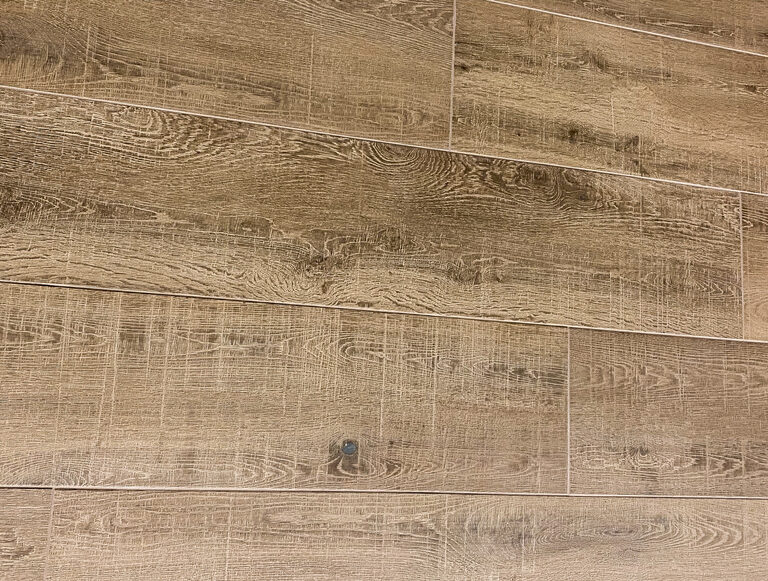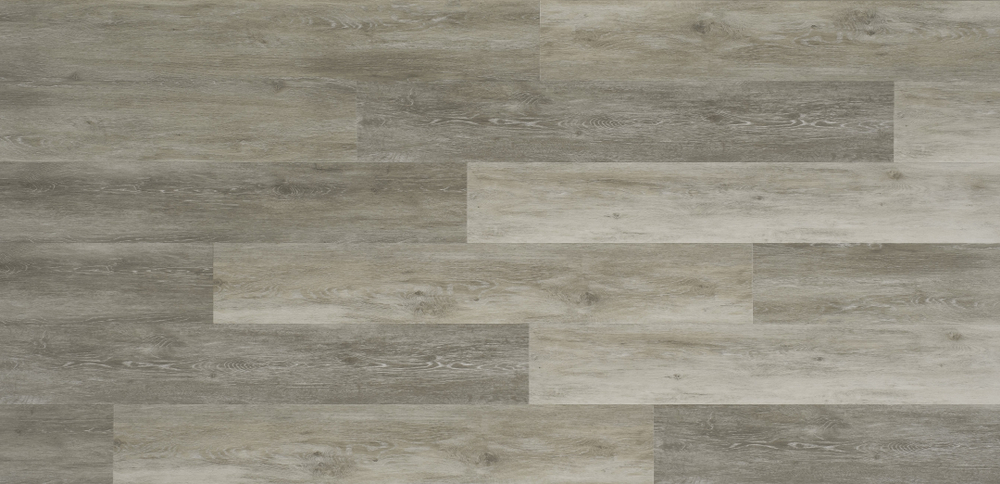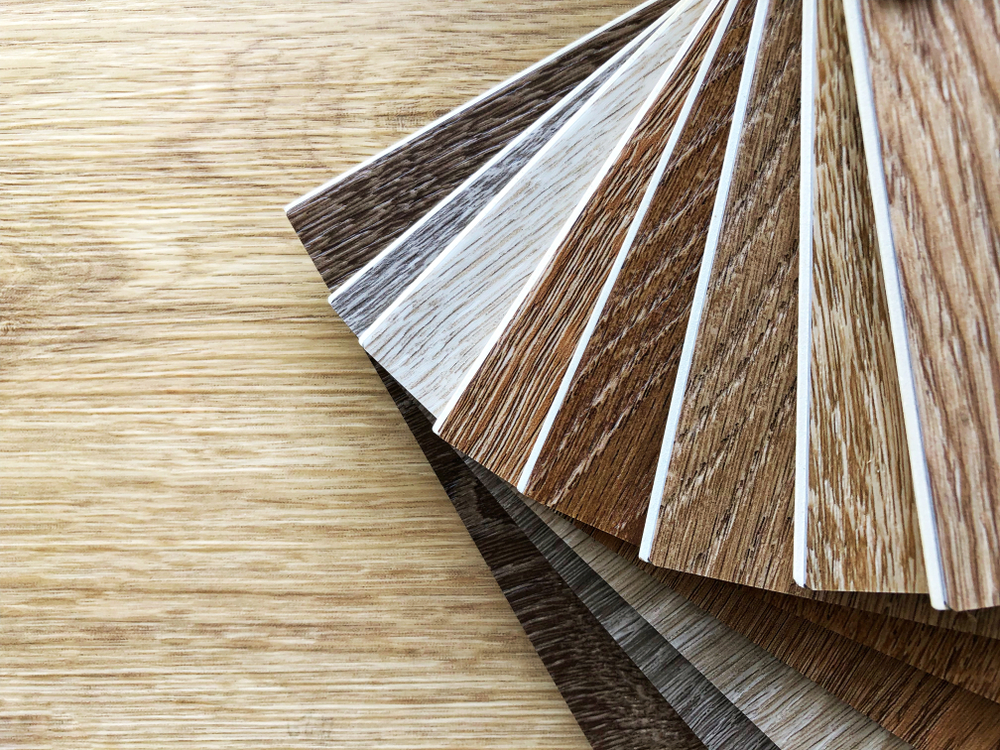Vinyl plank is rapidly becoming one of the most popular household flooring types for its versatility, affordability, and easy maintenance routine.
While hardwood floors get scuffed and carpet has a nasty tendency to stain, vinyl is a cinch to keep in tip-top condition. With even just a basic maintenance routine, you’ll keep your shiny vinyl plank floor looking squeaky clean for years to come.
In this post, we’ll delve into the details of how to clean your vinyl plank floor.
And to ensure yours will stand the test of time, we’ll throw in a few handy maintenance tips and a list of what not to do.
How to Clean Vinyl Plank Flooring: Quick Guide
If you’re in a rush and just want a fast answer, this ultra-concise, quick guide covers the basics.
- Sweep or vacuum dirt and debris from the floor, paying close attention to the edges
- Mop the floor with warm water and dish soap (add vinegar if required)
- Mop the soap clean with warm water only
- Dry the floor with a dry mop or towel
Now for the in-depth guide.
What Is Vinyl Plank Flooring?
Before we get stuck into our cleaning tips, you might be wondering what this flooring type is all about. Vinyl is a popular synthetic material used for household flooring and a myriad of other things. The scientific name is polyvinyl chloride, although it’s more commonly known as PVC.
Vinyl plank flooring comes in long thin plank-like strips that emulate the look of a genuine hardwood floor. Often, the product even includes a realistic wooden grain, which can be difficult to distinguish from the real thing at first glance.
Another common name is luxury vinyl plank flooring, which is just a fancy way of saying the same thing.
Vinyl plank flooring differs from vinyl sheet and vinyl tile flooring in both structure and shape. The planks tend to be sturdier and more durable, enabling them to withstand scratches and spills. For that reason, vinyl plank flooring works just as well in kitchens and bathrooms as it does in living rooms and bedrooms.
While it looks lovely, it doesn’t quite have the same aesthetic appeal as proper hardwood flooring. It’s also rather tiresome to replace damaged planks, so be sure to read our section on what not to do.
Pros:
- Affordable
- It looks similar to real wood
- Easy to clean
Cons:
- It doesn’t look as good as hardwood or slate
- It’s hard to repair or replace damaged planks
How to Clean Vinyl Plank Flooring: A Two-Part Process
Vinyl plank is the easiest type of domestic flooring to clean and only requires two simple steps: sweeping/vacuuming and mopping.
1. Getting Rid of the Grime
Consistency is the key to keeping vinyl planks clean.
You might be surprised to learn everyday debris can be sharp enough to scratch the surface of the PVC. When you step on tiny specs of grime, it acts like sandpaper and wears away the delicate finish as you shuffle your feet. That’s not to say you’ll ruin your floor immediately. But if you regularly neglect to sweep or vacuum, your vinyl plank flooring will wear out much quicker than it usually would.
Ideally, aim to gently sweep away or vacuum up the dirt every few days. But as we’re all out there living busy lives, a more achievable goal would be once per week.
Pay close attention to the edges of each room as dirt and debris love to accumulate there. If you’re vacuuming, pop on the brush extension so you can get right into those hard to reach corners.
Pro tip: If you’ve got a leaf blower, you can blast all the nastiness into one corner of the room for a super quick clean.
2. Mopping Time
Your vinyl plank flooring will eventually become stained from food scraps and other bits of gunk. These caked-on chunks won’t simply sweep away, so you’ll need to apply some good ol’ fashioned elbow grease.
Although it’s durable, vinyl plank flooring isn’t designed for serious scrubbing, so give the steel wool a wide berth. It also doesn’t bode well with harsh chemicals; you’ll need to be strategic about what you apply.
Opt for an ordinary mop without the in-built brush option, preferably one with a super soft microfiber head. Fill a bucket with warm water and a modest dose of dishwashing liquid, then start mopping away. Once you’re done, use a mop on the floor again with warm water (sans the soap) to soak up all the excess suds.
It’s best not to let the water dry naturally as it can seep into the cracks and warp the planks over time. Therefore, to finish up, give the floor another quick do-over with a dry mop—the microfiber material comes in handy here. If you don’t have a dry mop available, a towel will do in a pinch.
If your vinyl plank flooring is looking rather gross, feel free to add a splash of white vinegar to the mix. About one cup per gallon will do the trick.
If that’s not enough to remove an incredibly stubborn stain, then get down on all fours and start scrubbing. Use the same vinegar/dish soap solution (avoid bleach or other harsh cleaners) and carefully but steadily scrub away with a soft nylon brush. Vinyl is remarkably waterproof and stain-resistant, so you should start to see the mark fade away in no time.
What Not to Do When Cleaning a Vinyl Floor
Although durable, vinyl planks aren’t invincible, and they’re a bit of a chore to fix when something goes wrong. Removing a damaged plank and replacing it with a new one is challenging at the best of times, so look after them as well as you can.
With that in mind, we’ve put together a handy list of things you should avoid when cleaning your vinyl plank floor.
Never Ever Do the Following With Vinyl Plank Flooring:
- Vacuum with a beater bar extension—these are designed to agitate the carpet and could scratch your floor.
- Scrub with steel wool or a stiff-bristled brush—these course components will almost certainly scratch your floor.
- Use harsh chemical agents, including acidic, alkaline, and abrasive cleaners—these can dissolve the sealant coating and ruin your floor.
- Use oil-based soaps—these allow unsightly mounds of soap scum to accumulate on the floor.
- Use a steam cleaner—the heat generated can cause your floor to warp and degrade.
- Use a buffing machine—these can remove the outer layer of the PVC.
- Neglect to clean up spills—liquid can gradually seep into the seams and cause the adhesive to fail.
Maintaining Vinyl Plank Flooring
Now you know how to clean a vinyl plank floor, let’s look at a few simple maintenance ideas. Keep these nifty tips in mind to reduce your cleaning frequency and maintain a shiny new-looking floor for years to come.
- If your vinyl floor has been recently installed, give it some time to settle. Premature use of a vinyl plank floor—whether you walk on it or attempt to clean it—can damage the adhesive. The appropriate setting time varies, so check the instructions provided by the manufacturer.
- Throwdown some doormats outside the external entryways to your home and make a point of using them. The more liquid, dirt, and debris you track in your home, the more likely you will scratch your floor.
- Consider enforcing a ‘no shoes in the house’ rule. Taking off your shoes upon entering the home is the easiest way to avoid tracking in unwanted debris. Not only will your floor last longer, but you’ll cut down your cleaning time as well.
- If you’ve got heavy rolling furniture such as sofas or beds, throw a matt under the wheels to protect the floor.
- Place floor protectors under the edges of heavy pieces of furniture and household appliances, as these can easily scratch your flooring when moved. Refrigerators are especially notorious for leaving unsightly marks on a vinyl floor.
- When moving heavy furniture, lift it completely off the ground rather than dragging it to avoid scratching the floor. If it’s too heavy to carry, use a dolly or lay down some plywood sheeting and pull it over that instead.
- Keep your curtains or blinds closed while not using a room. Direct sunlight will cause a vinyl floor to fade over time.
- Aim to maintain a relative air humidity of between 50% and 65%. Too much moisture will cause the adhesive in the flooring to fail.
- Reseal any damaged seams in your vinyl floor immediately. Otherwise, the seam will degrade further, and the repair job becomes much more complicated.
How to Clean Vinyl Plank Flooring: Final Thoughts
Compared to carpet or hardwood, vinyl plank flooring is a cinch to clean and maintain. By keeping up a regular cleaning routine and following our handy maintenance tips, you’ll ensure your floor will look sleek for years to come.


